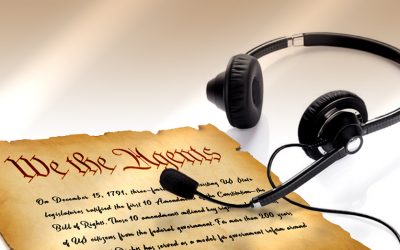The FCC has been working to create a portal that tracks number reassignment to the general availability pool. In simplest terms, this means that we now have a method to track when a phone number has been disconnected. When a subscriber (the person or business who owned the phone number) disconnects their number, the number is returned to a general “pool” of phone numbers. That number can then be reassigned to another subscriber.
Why is this important? Many pieces of legislation at both federal and state levels require some sort of consent to call a subscriber. Most notably, the TCPA states that solicitation calls to cellular numbers can only be performed with express consent, and calls from an ATDS (Automatic Telephone Dialing System) can only be performed with express written consent. Many legitimate businesses have taken steps to follow this legislation, but they have fallen victim to “professional plaintiffs”. When a subscriber who provided proper consent disconnects their number, that consent is automatically terminated. However, outside of the subscriber contacting those to who they gave consent and let them know they have had a number change, the business had no way to know they had lost consent.
Example:
Jose Urbano is excited to purchase the Tesla all-electric pickup truck, but, due to the pandemic, production is halted, and supplies are limited. On July 1st, he visits Tesla’s website and signs up to be among the first who are called when assembly resumes. Tesla commits to sending him a text message as soon as new trucks are available and he should visit the dealership. Jose consents to receive this message from an ATDS.
In October, Jose decides to get a new phone number – he relocated from Chicago to Miami a decade ago but previously could not bring himself to give up that old phone number. In December, William Paul, an attorney, and professional plaintiff purchases 20 new cellular phones, and he specifically requests phone numbers that were recently reassigned. Among those 20 numbers, he receives is Mr. Urbano’s old Chicago number.
Production on Tesla models resumes in January and as requested and consented by their prospect Jose Urbano, they send him a text message to notify him to come to visit a local dealership. Unfortunately, this text message goes to Mr. Paul (who now owns this number), and Mr. Paul files a lawsuit against Tesla for a TCPA violation. Mr. Paul will likely win if this goes to court, so Tesla settles.
While this may sound farfetched, this is very similar to a story you could read in Forbes about a woman who made over $800K in one year with this same scheme. Believe it or not – it is completely legal, and companies doing everything in their power to follow the regulations still fall, victim. After years of petitioning, the RND (Reassigned Number Database) was developed to help solve this problem.
The RND works similar to DNC (Do Not Call) lists that many people are already familiar with in that it contains a list of numbers that can be checked or “scrubbed against” by an organization before dialing. Where the RND differs is that it also contains a date with the phone number. A calling party (i.e., a contact center) can send a number with the date on which they received consent. The database will then respond and state whether the number has been disconnected since that date. In our example with the RND in place, Tesla would send Mr. Urbano’s phone number along with the date of 7/1/2020. They would receive a response indicating this number did have at least 1 disconnect date later than that date, and Tesla would realize they have lost consent and should not contact using an ATDS (or perhaps any means, for that matter).
All carriers are required to submit a monthly update on the 15th of each calendar month (regardless of the day of the week that falls on or if that is a holiday). Additionally, once a number has been disconnected, it may not be reassigned for at least 45 calendar days from the date it was returned.
Large carriers are required to submit seed data as of April 15th, and the remaining smaller carriers must do the same by October 15th. While there is no official date on which users can begin accurately querying the database, we imagine this will be by the end of 2021.
Although the database does not yet contain data, the FCC is encouraging interested parties in beginning the registration process now. Usage costs have not yet been defined, but we expect them to be published soon.
If you would like to register now, the database can be found online at https://www.reassigned.us If you would like to learn more about the database itself, visit the FCC’s informational webpage at https://www.fcc.gov/reassigned-numbers-database. You can also reach out to Grupo NGN to learn more. Our Chief Technology Officer represents PACE1 to the FCC’s North American Number Council, which is overseeing the implementation of this portal.
1 PACE is the nation’s only non-profit trade organization dedicated exclusively to the advancement of companies that use a multi-channel contact center approach to engage their customers.



